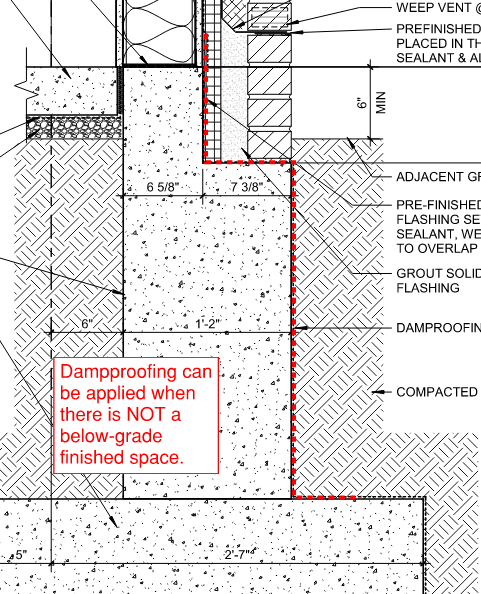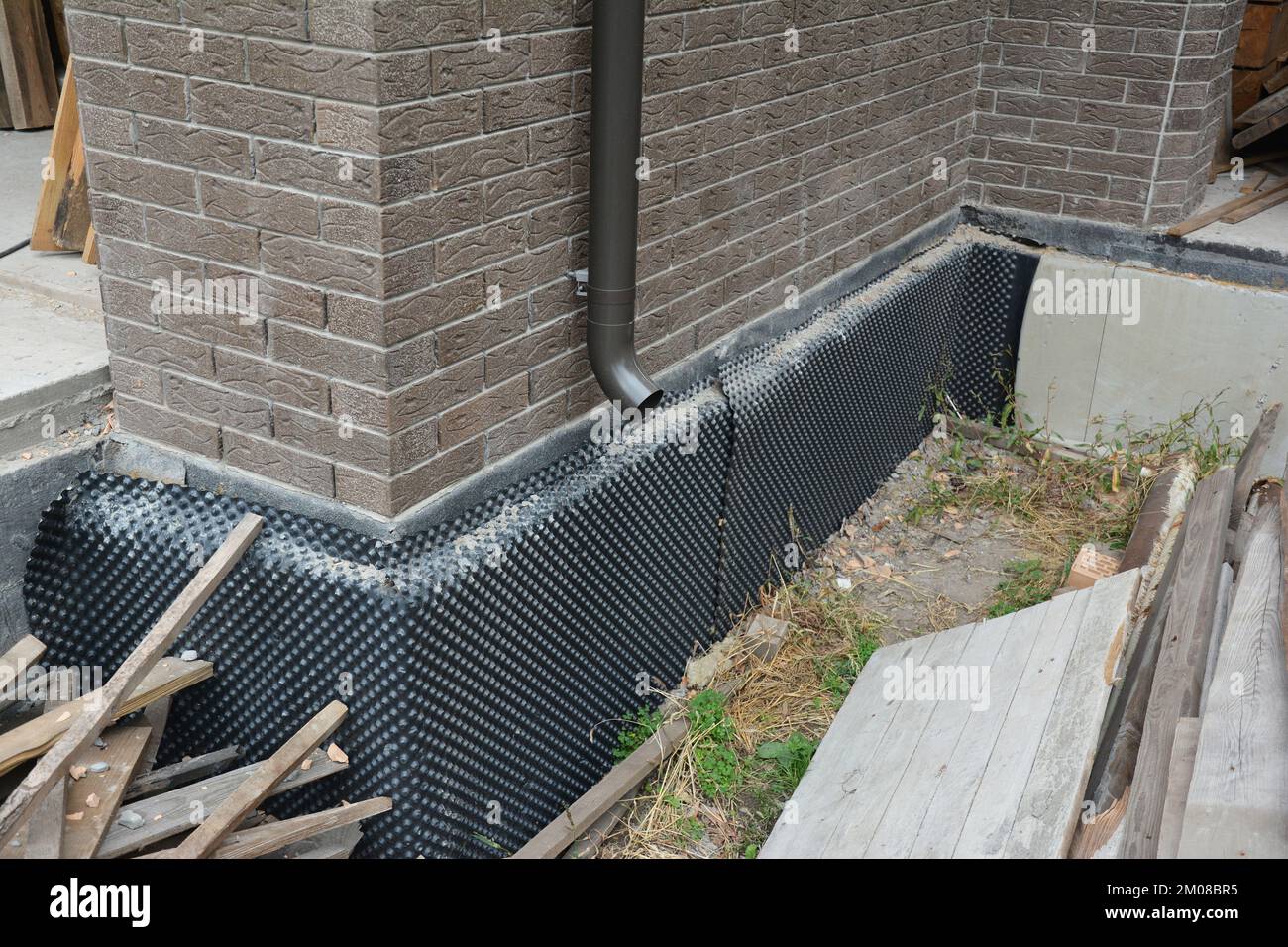Time-tested tips for damp specialist newcastle to maintain your building's integrity
Time-tested tips for damp specialist newcastle to maintain your building's integrity
Blog Article
Exploring the Numerous Techniques and Solutions for Effective Damp Proofing
Moisture in structures poses substantial challenges to both structural stability and indoor air high quality. Numerous techniques and options have actually arised to battle this prevalent concern. From typical damp-proof membranes to innovative chemical treatments, each technique supplies one-of-a-kind advantages. Comprehending these alternatives is essential for efficient moisture control. However, choosing the best solution depends on specific building problems and demands, motivating additional exploration into one of the most reliable wet proofing approaches readily available.
Understanding the Causes of Dampness
Wetness can emerge from different sources, recognizing these causes is vital for reliable removal. Frequently, dampness stems from three primary resources: increasing wet, passing through damp, and condensation. Rising damp occurs when groundwater travels upwards via permeable products, such as block or stone, frequently because of a lack of a reliable obstacle (mould removal newcastle). Permeating damp is typically brought on by exterior elements, consisting of roof covering leakages, defective gutters, or harmed wall surfaces, allowing water to infiltrate a building. Condensation, on the other hand, results from excess dampness airborne, commonly aggravated by inadequate air flow and temperature differences, causing water beads basing on surface areas. Recognizing these underlying issues is necessary, as each kind of dampness requires a customized technique for removal. Appropriate analysis assists in determining one of the most reliable solutions, inevitably safeguarding the architectural honesty of a building and boosting indoor air top quality
Conventional Damp-Proof Membrane Layers

Chemical Damp-Proofing Solutions
Chemical damp-proofing services supply an innovative method to protecting against moisture breach in structures. These methods commonly entail the application of fluid chemicals that penetrate masonry and develop a barrier versus climbing wet. Generally made use of chemicals consist of silanes, siloxanes, and other water-repellent agents that react with surface materials to create a hydrophobic layer.The application procedure generally requires boring holes into the walls, infusing the chemical solution, and allowing it to cure. This method is particularly beneficial for older structures where traditional damp-proof membranes may be unwise. Chemical damp-proofing can be much less disruptive and a lot more affordable than extensive improvement projects.While efficient, these solutions depend on correct application and environmental problems for peak efficiency. damp removal newcastle. Regular maintenance and surveillance are vital to assure the durability of the damp-proofing treatment. In general, chemical damp-proofing stands for a flexible alternative for securing structures against moisture-related damages
Cavity Wall Surface Building And Construction Methods
Tooth cavity wall building and construction techniques use numerous advantages, particularly in dampness control and energy efficiency. By incorporating an air space in between two layers of masonry, these walls efficiently alleviate water access while enhancing insulation. This combination not just shields structures from dampness yet also adds to reduced energy intake.
Advantages of Cavity Walls
When taking into consideration reliable damp proofing techniques, the benefits of tooth cavity wall surfaces attract attention prominently. Dental caries walls include 2 separate layers, developing an air gap that successfully decreases wetness infiltration. This design reduces the risk of wetness, as the outer wall acts as a barrier against rain and water ingress. Additionally, dental caries wall surfaces enhance thermal insulation, which adds to power efficiency by decreasing warm loss. They likewise offer sound insulation, assisting to develop a quieter interior setting. Moreover, the air void permits air flow, which assists in moisture control and reduces the probability of mold and mildew growth. These benefits not only boost the overall convenience of a building however additionally add to its longevity and architectural honesty.
Dampness Control Approaches
Reliable dampness control approaches are important in cavity wall surface building to ensure lasting protection versus dampness. One main technique involves the unification of weep openings, which promote water drain from the tooth cavity, preventing buildup. Additionally, making use of breathable membranes can aid manage wetness levels while allowing caught vapor to get away. Proper positioning of insulation is additionally critical, as it must not block drainage courses. In addition, making certain that the outer leaves of the cavity wall are created with water-resistant products enhances total longevity. Regular maintenance checks are necessary to recognize any kind of blockages or damage early, guarding the structure's honesty. Ultimately, a mix of these strategies creates a durable defense versus dampness breach in tooth cavity wall surfaces.
Insulation and Energy Efficiency
Insulation plays a crucial function in enhancing energy effectiveness within cavity wall building. By integrating protecting materials, these wall surfaces produce a thermal obstacle that decreases heat loss and minimizes energy intake. Efficient insulation not just assists keep a steady indoor temperature yet likewise minimizes the danger of wetness, as it protects against condensation within the wall cavity. Different techniques, such as using inflexible foam boards or mineral woollen, can be utilized to accomplish ideal insulation performance. Additionally, correct installation is necessary to ensure that voids and spaces are decreased, which can or else jeopardize power effectiveness. Eventually, a well-insulated dental caries wall adds greatly to overall sustainability and lowers cooling and heating costs for home owners.
External Damp Proofing Methods
Outside moist proofing techniques are crucial for shielding frameworks from wetness infiltration. 2 efficient strategies include the application of water resistant membrane layers and the installment of French drains. These solutions assist alleviate water buildup and maintain the stability of buildings.
Waterproof Membrane Application
While various methods exist for protecting against dampness ingress, the application of waterproof membranes continues to be an extremely reliable outside wet proofing technique. These membranes are usually made from products such as polyethylene, rubber, blog here or modified bitumen, giving a robust obstacle versus water penetration. The setup procedure involves using the membrane layer to the outside surface areas of wall surfaces or structures, making sure full protection to protect against leaks. Appropriate adhesion and sealing at joints are critical to taking full advantage of effectiveness. Water resistant membranes can be applied in numerous forms, including fluid coverings and sheet membrane layers, enabling flexibility based upon the certain requirements of the structure. This technique not just protects buildings from moisture yet also improves their durability and architectural integrity.
French Drain Installation
One efficient technique for taking care of groundwater and preventing moisture build-up around a building's foundation is the setup of a French drain. This drain system contains a trench loaded with crushed rock and a perforated pipeline that reroutes surface area water far from the foundation. Appropriate installation needs careful planning, guaranteeing that the drain slopes far from the framework to promote perfect water circulation. Additionally, the area of the drain is essential; it must be placed in locations vulnerable to pooling or excess moisture. Regular upkeep, consisting of clearing debris from the gravel and ensuring the pipeline continues to be unhampered, is important for long-term performance. Eventually, a well-installed French drain can significantly decrease the risk of water-related issues in cellars and foundations.
Interior Waterproofing Approaches
Inside waterproofing techniques are vital for safeguarding a building's inside from you can try this out dampness infiltration and prospective water damage. These strategies typically entail the application of specific products and strategies developed to develop a wetness obstacle within the structure. One common technique is making use of water-proof layers or sealants on walls and floors, which stop moisture from permeating surfaces.Additionally, installing interior water drainage systems, such as sump pumps, can efficiently manage water accumulation in basements and creep spaces. One more method includes making use of vapor barriers, which are set up to prevent dampness movement from the ground right into living spaces.Moreover, dealing with any type of splits or gaps in wall surfaces or structures with appropriate sealants assures a detailed defense against water invasion. By implementing these interior waterproofing methods, residential property owners can significantly minimize the threat of mold growth, structural damage, and various other moisture-related concerns. Proper execution of these methods is important for lasting defense and building integrity.
Routine Maintenance and Examination Practices
Normal maintenance and inspection techniques are vital for guaranteeing the long-lasting efficiency of moist proofing remedies in any kind of structure. Regular checks enable building owners to identify very early indicators of moisture breach, such as peeling off paint, mold and mildew development, and mildewy smells. These indicators can signal underlying concerns that call for prompt attention.Inspections need to be conducted a minimum of yearly, focusing on vulnerable areas like basements, creep areas, and outside wall surfaces. During these evaluations, building proprietors must analyze sealants, drainage systems, and air flow to confirm they work correctly.Additionally, maintaining downspouts and seamless gutters is crucial, as stopped up systems can result in water accumulation near the structure. Applying a routine upkeep routine, together with prompt repair services, can significantly extend the life expectancy of damp proofing actions and secure the structural honesty of the building. Proactive procedures ultimately add to the general health and wellness of the living setting.
Frequently Asked Inquiries
How Much Time Does Damp Proofing Normally Last?
The duration of moist proofing effectiveness differs, usually lasting between 20 to half a century. Elements such as application top quality, environmental problems, and upkeep methods greatly affect the long life of the moist proofing therapy.

Can I Damp Evidence My Home Myself?
The specific contemplated the expediency of DIY damp proofing. With proper research and the appropriate products, it is feasible. They additionally acknowledged the importance of specialist support to ensure long-lasting performance and avoid future issues.
What Are the Signs of Inadequate Damp Proofing?
Signs of inadequate moist proofing include relentless moldy smells, visible mold growth, peeling off paint, damp spots on walls, and timber decay - mould removal newcastle. Property owners need to deal with these concerns without delay to avoid additional damage and health worries
Does Damp Proofing Affect Indoor Air Quality?

Just How Much Does Specialist Damp Proofing Expense?
Professional damp proofing prices vary significantly, typically varying from $1,000 to $5,000 depending on the building's dimension, the degree of the damp concern, and selected methods. Each scenario needs a tailored analysis for precise pricing. Generally, moisture originates from 3 primary resources: increasing wet, permeating damp, and condensation. When taking into consideration efficient damp proofing approaches, the advantages of dental caries walls stand out plainly. Outside damp proofing techniques are important for protecting frameworks from moisture infiltration. While various techniques exist for avoiding dampness ingress, the application of water-proof membranes stays a very efficient exterior damp proofing method. Signs of inefficient damp proofing consist of relentless moldy smells, noticeable mold development, peeling off paint, damp spots on wall surfaces, and click here to read wood decay.
Report this page